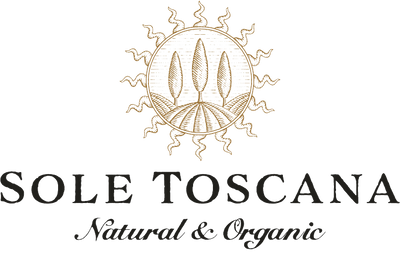We all love our perfumes, but rarely do we think about what ingredients give them their pleasant smell. Well, maybe you've read about perfume ingredients, either out of curiosity or concern. In this case, you've probably noticed the word 'fragrance' on the ingredient labels.
Fragrance: it's a secret
The 1973 Federal Fair Packaging and Labeling Act required manufacturers to list the ingredients on their cosmetic product labels. However, fragrance was an exemption.
This loophole allows companies to classify fragrance as a trade secret; thus they withhold information on their proprietary blends. This move makes sense- it's an exclusive product that brands create, market, and profit from, as well.
Unfortunately, brands often use this loophole to mask chemicals scientifically proven as harmful. Any ingredient that a company doesn't want to disclose often goes under the name 'fragrance.'
The law requires companies to disclose non-fragrance ingredients in perfume, but the FDA does not have the jurisdiction to require these companies to test their products for safety before putting them on the shelves. The burden falls on the consumer to research the ingredients on the label to determine their safety.
The Campaign for Safe Cosmetics
The Campaign for Safe Cosmetics is a project by the Breast Cancer Fund. Since 2004, the Fund has been educating consumers about toxic chemicals in beauty products and putting pressure on the industry to change.
Using their knowledge about the chemicals fragrance, they tested name brand perfumes in 2010. They tested 17 perfumes and discovered 38 chemicals not listed on the labels. Each product had an average of 14 unlisted chemicals.
Some of the unlisted ingredients were harmless fragrance ingredients that constitute the proprietary blend. However, many of them were questionable preservatives and additives.
The CSC study noted that many of the undisclosed chemicals have proven adverse effects on your hormonal system. Here are 5 of the worst.
Five perfume ingredients that affect your hormones
1. OXYBENZONE
Only 1 of the perfumes tested by CSC contained oxybenzone, but that's an ingredient that shouldn't ordinarily be in a scent. That's because it's a common agent in sunscreen.
Oxybenzone is a chemical sunscreen- it absorbs UVA and UVB rays. Physical sunscreens like zinc oxide block the rays. When light falls on oxybenzone, a chemical reaction occurs that produces harmful compounds.
Also, evidence suggests that oxybenzone mimics estrogen, potentially contributing to hormone imbalance, which can lead to improperly developed sexual organs, infertility, and decreased sperm count.
2. BHT
BHT and other butylated compounds act as preservatives in products. And while not all preservatives are harmful, BHT is.
Research suggests that BHT mimics estrogen (it could compete with your body's estrogen for binding sites), potentially upsetting your hormone balance. In some instances, BHT can also promote the growth of tumors.
BHT accumulates in the body over time, so even a product that contains a tiny amount can harm you in the long run. Even though you choose BHT- free scents, you'll still find it in skincare, makeup, diaper cream, and even fatty food like chips, baked goods, butter, and more! Avoiding this ingredient is hard, but worth a try.

3. PHTHALATES
These are a group of chemicals used in different products: detergents, food packaging, vinyl flooring, and pharmaceuticals.
When used in perfume, they make the scent adhere to your skin.
Research shows that phthalates disrupt the endocrine system, thereby disrupting normal hormone production. Exposure to phthalates could cause decreased male fertility, reproductive abnormalities, and decreased production of testosterone in males. Other studies show a link between phthalates and endometriosis and premature delivery in women.
4. OCTINOXATE
This ingredient is a UV absorber commonly found in sunscreen products. It occurred in 8 of the brands tested by the CSC.
In certain studies, researchers found octinoxate in mother's milk, suggesting widespread population exposure. In lab cultures, this chemical binds to and stimulates estrogen receptors. In a study done on animals, octinoxate increased the weight of the uterus, indicating interference with estrogen.
5. MUSK KETONE
In a study published by The International Journal of Hygiene and Environmental Health, the effects of musk ketone on human health and the environment were outlined.
Since it's nonbiodegradable, musk ketone has been found in aquatic environments, affecting the wildlife that lives there.
Musk ketone also occurs in fatty tissue and breast milk, indicating regular exposure in people.
This chemical is an endocrine disruptor and a carcinogen.
It's challenging to find a safe perfume. Until the law compels companies to disclose their perfume ingredients, consumers have the challenge of determining whether a product is safe or not.
With love,
The Sole Toscana Beauty Team


